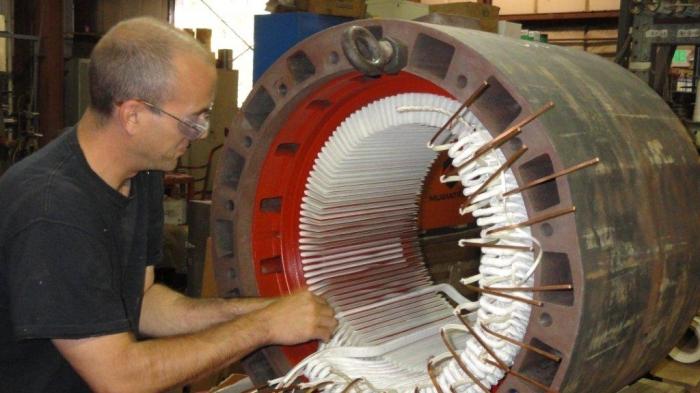It can rightfully be said that electric motors are the basis of modern civilization. With the current level of progress, they represent one of the most effective solutions for converting one type of energy into another.
Electric motors are so widespread that sometimes, looking at a particular device, it is impossible to even assume that it uses any kind of electric motor. For example, few people know that in some mobile phones the vibration mode is realized due to the rotation of the shaft of a compact motor with an eccentric installed on it. Not surprisingly, even fewer people know how to connect an electric motor. Although, frankly, there is nothing complicated about it. To understand how the electric motor is connected, there is no need to finish electrical courses or delve into the interaction of magnetic fields inside the device.
Roll up your sleeves ...
The connection of the electric motor does not begin at all by supplying voltage to the terminals, but by inspecting the specifications of the device. On any electric motor (unless, of course, it has been in the hands of vandals and has not been operated in an aggressive environment) there is always a small plate that shows the type, efficiency, voltage and current, rated shaft rotation speed, etc.
If you ignore this data and connect the electric motor, then it is quite possible that the power source, conductors or the motor itself will be damaged.
One of the key points is power (in kilowatts). Its value affects the cross section of the wire core, which will be supplied with voltage. The dependence of the conductor cross section on current and power is given in a special table (can be found in the PUE).
AC Solutions
Since asynchronous motors are more widespread , then we will consider them later. Opening the boron cover (terminal box), you can see the dielectric block with a number of conclusions. Motors designed for three-phase networks can have 3 or 6 contacts. In the first case, the connection is simple: a phase (380 V) is supplied to each terminal, and if necessary, change the rotation, any two of them must be interchanged.

The 6-pin motor circuit is more flexible. Usually on the plate in the “Voltage” column two values are indicated at once: 220 and 380 Volts (or 380 and 660). This means that depending on the method of power supply, the potential on the windings will be different. There are two options: a "triangle" and a "star." Inside the engine there are three windings, the beginning and ends of which are respectively designated C1-c4, C2-c5, C3-c6. The label always indicates the connection of the voltage, that is, 220/380 with a "triangle / star" means that the connection diagram of the internal windings, for example, in a star, is used for a 380 V network. This should not be confused, unless, of course, you want to unscheduled repair of the electric motor.
Connect the findings
Suppose the desired voltage is selected. On the plate we determine the connection diagram. It remains to correctly install the jumpers between the terminals and bring the voltage. For the star, you should install bridges between the contacts C4-C5-C6, and connect the opposite phases to C1, C2 and C3. For a triangle, the scheme is different: jumpers are placed between C3-C5, C2-C4 and C1-C6. In a two-wire network, the third “phase” can be obtained by turning on the auxiliary capacitor. This scheme is widely available, therefore it is not considered here.
Each of the methods for connecting the internal windings has its own characteristics: on one large currents and power, and on the other smooth operation. Choosing the right scheme should be based on the capabilities of the network and the tasks that can be solved with the help of an electric drive.